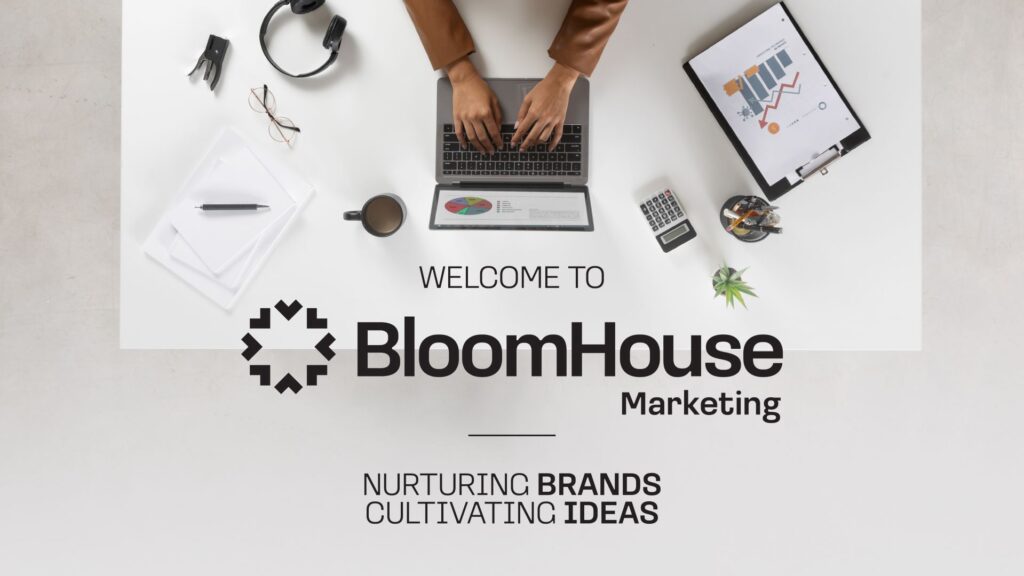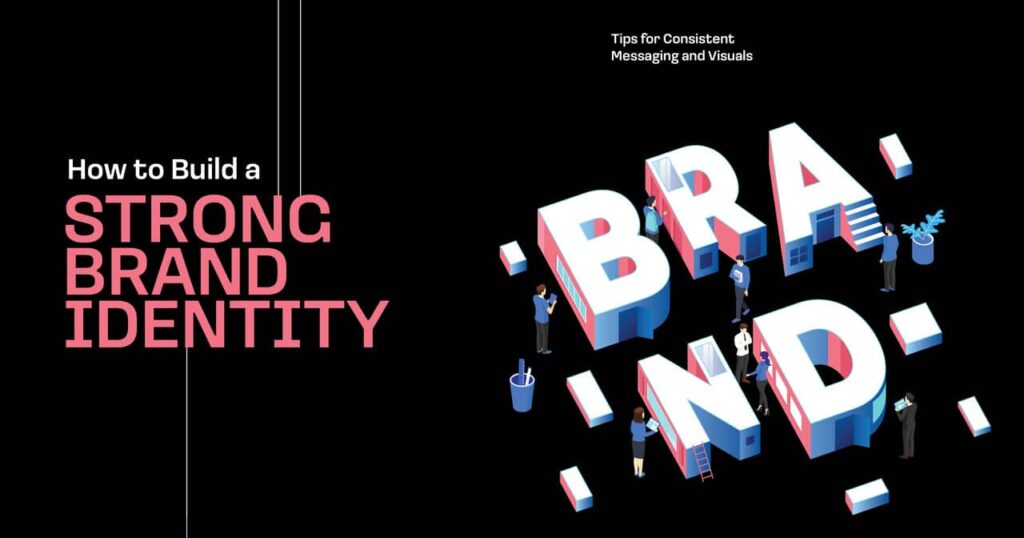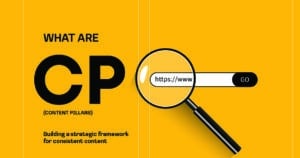Creating a strong brand identity is like crafting the perfect recipe: it requires the right ingredients, a thoughtful process, and a bit of creativity. Your brand identity is more than just a logo or a tagline; it’s the essence of your brand that resonates with your audience, makes you memorable, and distinguishes you from the competition.
Essential Takeaways
- Define and Document Your Brand Identity: Identify your brand’s core elements, values, mission, and target audience. Create brand guidelines for consistent messaging and visuals.
- Prioritize Consistency Across Channels: Ensure uniformity in your brand’s messaging and visual elements across all social platforms and marketing campaigns to enhance recognition and trust.
- Continuously Monitor and Evolve: Regularly review your brand’s performance and adapt your identity design based on feedback and market trends to stay relevant and engaging.
In this comprehensive guide, we’ll examine the key elements of building a memorable brand identity and offer actionable tips for ensuring your messaging and visual identity are consistent and impactful.
Engage Your Audience with a Strong Brand Identity
In today’s crowded market, a distinctive brand identity can make all the difference. It’s not just about having a snazzy logo or a catchy slogan; it’s about creating a cohesive brand experience that resonates with your potential customers. Your brand identity encompasses everything from your visible elements to your messaging and the way you interact with your loyal customer base. When done right, it helps build customer loyalty, trust, and deeper connections with customers.
Why Brand Identity Matters
Think of your brand identity as the personality of your business. Just like people, brands have unique traits that set them apart. A well-defined brand identity helps you communicate who you are, what you stand for, and why people should care. It influences how customers perceive your brand and can significantly impact their buying decisions. Whether you’re a startup or an established company, investing time and effort into refining your comprehensive style guide is crucial for long-term success.
Defining Your Brand Identity
Understanding Your Brand’s Core Values
At the heart of every successful brand identity are core elements. These are the principles that guide your business strategy and decisions. Identifying your core values helps you build a compelling brand identity that is authentic and aligned with what you truly stand for.
Questions to Ask:
- What does my brand believe in?
- What principles guide our business decisions and practices?
- How do we want to be perceived by our target market?
For example, if sustainability is a core value, it should be reflected in every aspect of your brand, from your product packaging to your marketing efforts. Make sure your core elements are not just statements on a page but are ingrained in your company’s culture and operations.
Crafting a Compelling Brand Mission Statement
A brand mission statement is a short, impactful statement that outlines your brand’s purpose and goals. It should succinctly convey what your brand aims to achieve and how it plans to make a positive impact.
Example: “Our mission is to provide high-quality products that enhance the lives of our customers while protecting the planet.”
Identifying Your Target Audience
Understanding your target audience is crucial for developing a brand identity that resonates with them. Conducting thorough market research helps you gather insights into your audience’s preferences, behaviors, and pain points. This information will guide your marketing strategy, ensuring your messaging and visual branding choices align with what your audience values.
Questions to Consider:
- Who are they? (Demographics, interests, lifestyle)
- What are their needs and pain points?
- How do they prefer to engage with brands?
Developing Consistent Messaging
Crafting Your Brand’s Voice and Tone
Your brand’s voice and tone are essential elements of your messaging strategy. The voice is the personality and style of your communication, while the tone can vary depending on the context and audience.
Creating a Messaging Framework
A messaging framework provides a structured approach to your brand’s communication. It includes key takeaway messages, value propositions, and messaging pillars that guide your content creation.
Developing a Content Strategy
A content strategy is essential for maintaining consistent branding and engaging your audience. Your content creators should outline the brand’s goals, target audience, content types, and distribution channels. Regularly review and update your content strategy to ensure it aligns with your brand’s evolving identity.
Building a Cohesive Visual Identity
Designing a Memorable Logo
Your logo is often the first visual element of your brand that people encounter. It should be unique, memorable, and reflective of your brand’s identity.
Choosing the Right Color Palette
Colors play a significant role in brand perception. Different color palettes evoke different emotions and associations, so it’s important to choose a palette that aligns with your brand’s personality.
Selecting Fonts and Typography
Typography is another crucial element of your brand’s visual identity. The fonts you choose should complement your brand’s personality and be easy to read across various platforms.
Creating Brand Guidelines
Brand guidelines are a comprehensive document that outlines how your brand’s visual and messaging elements should be used.
Implementing and Maintaining Brand Consistency
Applying Your Brand Identity Across All Channels
Consistency is key to building a successful brand identity. Ensure your visual identity and messaging are applied across all channels, from social media platforms to marketing campaigns.
Monitoring and Evolving Your Brand Identity
Building a strong brand identity is an ongoing process. Regularly monitor your brand’s performance through key metrics like customer feedback and customer satisfaction.
Conclusion
Building a powerful brand identity is a multifaceted process that involves defining your core values, creating consistent messaging, and developing a visual identity that resonates with your target market.
Call to Action
Ready to build a powerful brand identity that sets you apart from the competition? Contact us today to discover how we can help you create a cohesive and memorable brand presence.
FAQs
1. What is brand identity, and why is it important?
The brand identity encompasses your brand’s visual and messaging elements, including your logo, color palette, and tone of voice. It’s important because it helps differentiate your brand from competitors and build a consistent, memorable image that resonates with your audience.
2. How can I ensure consistency in my brand messaging?
To ensure consistency, create a messaging framework that outlines key messages and value propositions. Regularly review and update your content strategy, and provide training to your team to ensure adherence to brand guidelines.
3. What are brand guidelines, and how do they help?
Brand guidelines are a comprehensive document that outlines how to use your brand’s visual and messaging elements. They help maintain consistency across all communication channels and ensure that your brand is presented professionally and cohesively.
4. How often should I review and update my brand identity?
Review your brand identity regularly to ensure it remains relevant and aligned with your business goals and audience preferences. This could be done annually or in response to significant changes in your market or business.
5. What role does visual identity play in building a strong brand?
Visual identity, including elements like your logo, color palette, and typography, plays a crucial role in creating a recognizable and cohesive brand image. Consistent use of visual elements helps reinforce your brand’s identity and build recognition with your audience.









